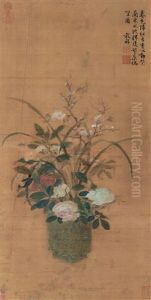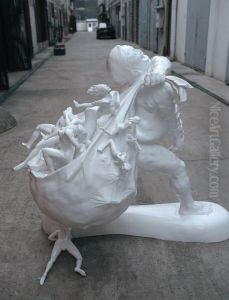Wang Guxiang Paintings
Wang Guxiang was a notable Chinese painter, calligrapher, and poet during the Ming Dynasty, specifically in the mid-16th century. Born in 1501, Wang Guxiang's contributions to Chinese art were significant during a period that was marked by a flourishing of culture and the arts. His life and work were situated in a time of great social, political, and cultural evolution in China, a period that saw the Ming Dynasty at its peak of power but also facing internal and external challenges.
Wang Guxiang was part of the Wu School, a group of scholars, painters, and calligraphers centered around the culturally rich region of Suzhou. This group was known for its emphasis on literati painting, a style that favored scholarly and personal expression over the more formalized and technical styles of painting that were popular at the imperial court. Wang's work is characterized by its delicate landscapes and intricate brushwork, which were often complemented by poetic inscriptions, reflecting the literati ideal of blending poetry, calligraphy, and painting into a single work of art.
Throughout his career, Wang Guxiang developed a style that was deeply personal and reflective of his intellectual pursuits. His landscapes often convey a sense of serenity and are imbued with philosophical and poetic sensibilities, capturing the essence of the natural world through the eyes of a scholar. His paintings were not just visual representations; they were expressions of his thoughts and feelings, a characteristic that made his work highly valued among his contemporaries and later generations.
Despite his contributions to Chinese art, detailed records of Wang Guxiang's life are relatively scarce, and much of what is known comes from his surviving works and the writings of his contemporaries. After his death in 1568, his style and approach to art continued to influence the development of Chinese painting, especially within the literati tradition. Today, Wang Guxiang's paintings are considered important artifacts of Chinese cultural heritage, offering insight into the intellectual and artistic endeavors of the Ming Dynasty.
















